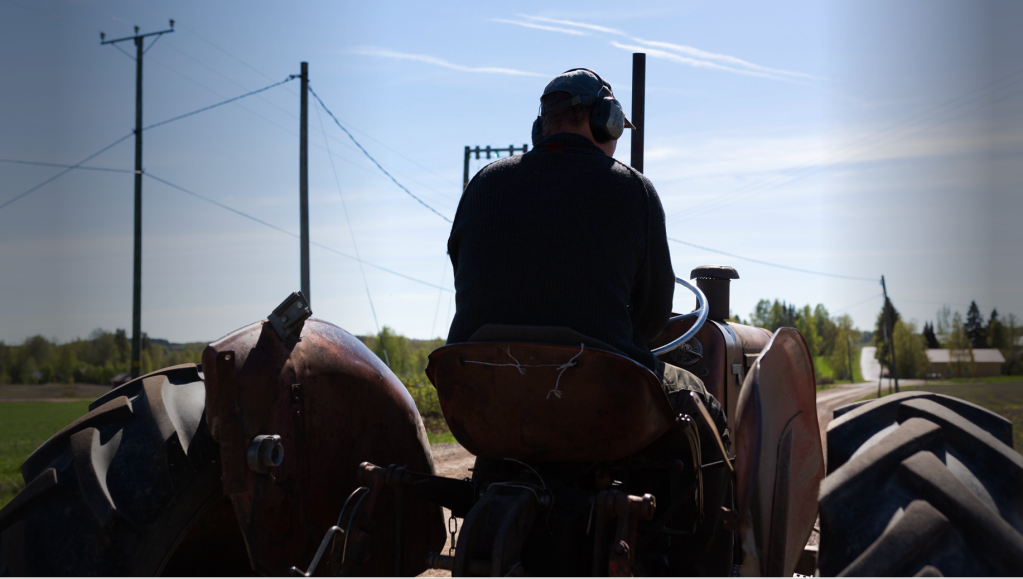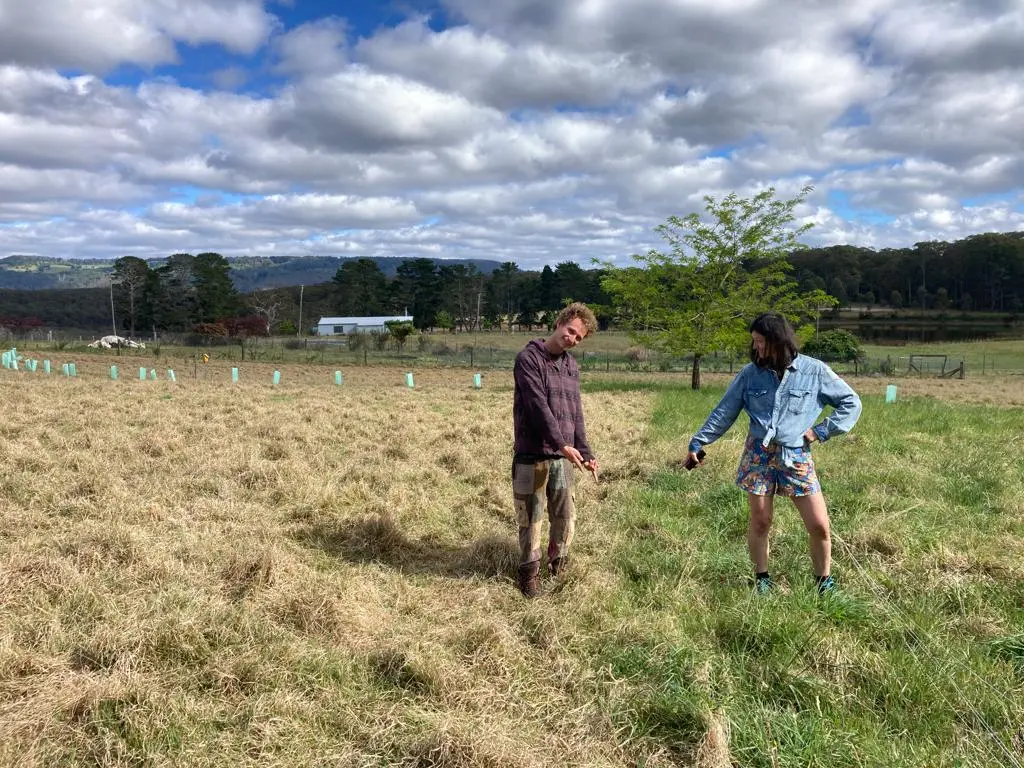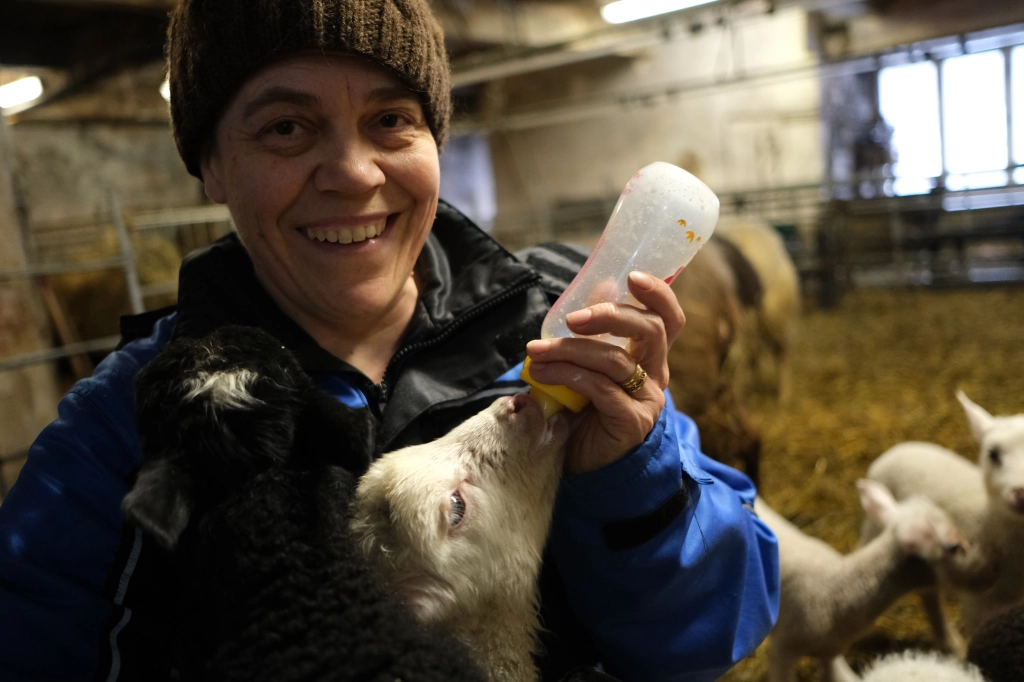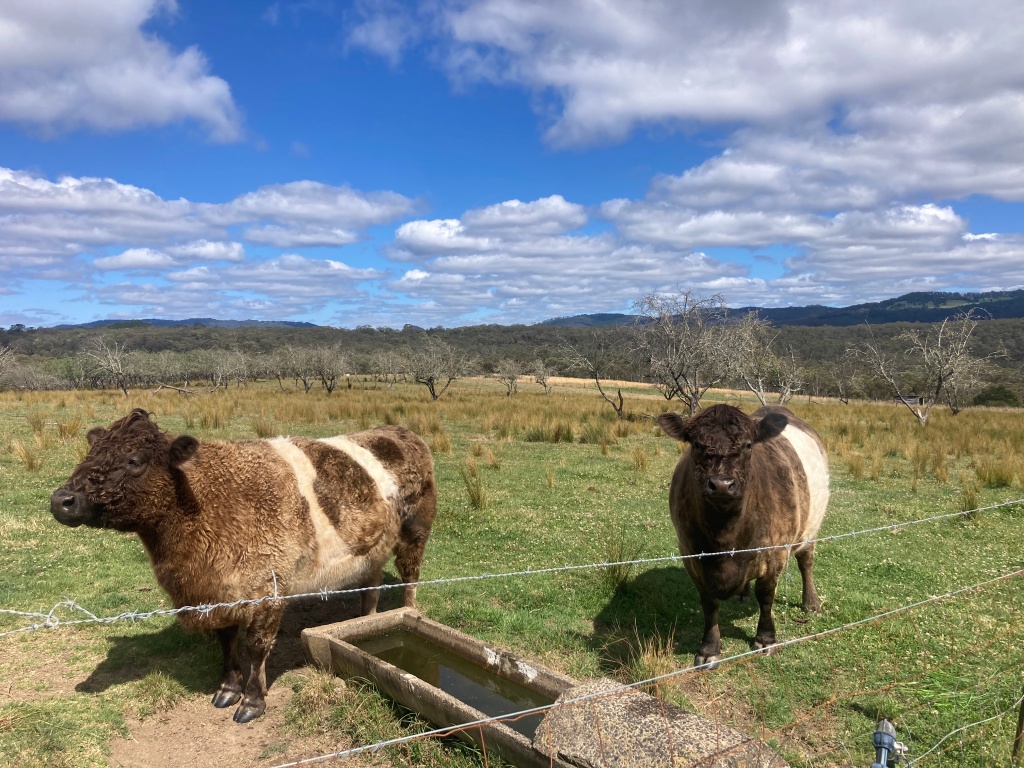You can read this blog post in English below
Elämä maapallolla on järjestäytynyt ravinnon hankinnan ympärille. Eliö- ja eläinyhteisöt ovat joutuneet sekä kilpailemaan että tekemään yhteistyötä ravintonsa eteen jo miljardien vuosien ajan selvitäkseen hengissä. Niin myös ihmisyhteisöt eri puolilla maailmaa jo kymennien tuhansien vuosien ajan ovat selvinneet hengissä metsästyksen, kalastuksen, keräilyn ja viljelyn ympärille muodostuneiden yhteisöjen voimin.
Verrattain hyvin hiljattain — teollistuneissa länsimaissa vasta noin parin vuosisadan ajan — tämä kehityskulku on muuttanut suuntaa: kaupungistumisen ja yhteiskuntien modernisaatiokehityksen myötä ravinnonhankinta on muuttanut radikaalisti muotoaan. Vielä noin 100 vuotta sitten valtaosan pääelinkeino oli maatalous ja suuri osa väestöstä eli paikallisessa ruokaomavaraistaloudessa. Vielä 90-luvun alussa Suomessa oli reilusti yli 100,000 maatilaa. Nykyään ruokaomavaraisuudesta lähinnää haaveillaan, ja maatiloja on virallisten tilastojen mukaan enää alle 50,000. Ruoka hankitaan prismoista ja sittareista ja kääritään muovipaketteihin.
Samaan aikaan kun kuurileivästä ja villiyrteistä on tullut hifistelyä, kosketuksemme ruuan alkutuotantoon on kadonnut lähes kokonaan.

Kun kotitalouksien suhde ruuan alkuperään on etääntynyt, niin on myös viljelijöiden toimintaympäristö kaventunut. Suurin osa ei pysty (tai koe pystyvänsä) aidosti vaikuttamaan omaan viljelyelinkeinoonsa, vaan sitä määrittävät kasvutalouteen, vientiin ja markkinakilpailuun orientoitunut tukipolitiikka, tuotantopanosteollisuus sekä oligopoliasemassa olevat jälleenmyyjät.
Tiedostan, että viljelijöiden elämä ei ole ollut ennenkään ruusuilla tanssimista, eikä tarkoitukseni ole tämän kirjoituksen myötä suinkaan romantisoida mennyttä aikaa. Käsillä oleva tilastollinen ja laadullinen aineisto viittaavat kuitenkin siihen, että suomalaiset viljelijät kokivat oman asemansa huononevan huomattavasti Euroopan Unionin yhteisten markkinoiden edistämisen ja EU-politiikan myötä (Markkola 2004, SKS).
Gabriel García Márquezin Sadan vuoden yksinäisyydestä saavuttiin sadan hehtaarin yksinäisyyden aikakaudelle.
Nykyään ruuan hankintaa ohjaavat täysin muut asiat kuin paikallisiin ympäristöolosuhteisiin sopeutettu ja ravintorikkaan ruuan tuotanto. Globaalit, kolonisaatioon pohjaavat ruokatalousmarkkinat, ja viime vuosina yhä enenevissä määrin finanssimarkkinat ohjaavat sitä, mitä syömme ja miten syömämme ruoka on tuotettu. Niin maatalouden tuotantopanos- ja koneteollisuus kuin ruokatalouden prosessointi ja vähittäismyyntikin ovat yhä keskittyneempiä ja valta on vain muutaman yrityksen käsissä.
Vaikka Suomella ja Australialla on hyvin vähän yhteistä, jos katsotaan maatalouden kehityskulkua, sääolosuhteita tai vaikkapa maaperää niin asia, mikä on täällä ollessani usein noussut esille, on se, että Australian elintarvikemarkkinat ovat lähes yhtä keskittyneet kuin suomalaiset elintarvikemarkkinat. Kun Suomessa kaksi suurta alan toimijaa, S-ryhmä ja K-ryhmä, hallitsevat yhteensä 82% päivittäistavaramarkkinoista, niin Australiassa kahden suurimman päivittäistavarakauppaketjun, Woolworthsin ja Colesin, markkinaosuus on 65%.
Käytännössä tämä tarkoittaa sitä, että valtaosa ihmisistä molemmissa maissa hankkii ruokansa ostamalla sen kaupasta täysin tietämättä siitä, mitä ruuan kasvattaminen on vaatinut ihmisiltä ja muilta eliölajeilta tai siitä miten tuotanto on vaikuttanut lähiympäristöön ja -yhteisöihin. Suurin osa ostaa ruokansa tuntematta heitä, jotka ovat kyntäneet ja kylväneet pellot, ruokkineet ja tappaneet eläimet, velkaantuneet ja polttaneet itsensä loppuun, hoivanneet ja rakastaneet niitä, joiden kädet ovat koskeneet syömäämme ruokaa.

Suurin osa ihmisistä molemmissa maissa ei välitä ja tule edes ajatelleeksi että sillä, mistä heidän ruokansa tulee, kuka sen on tuottanut ja miten, olisi jotakin väliä.
Tehtyäni viimeiset reilu kymmenen vuotta töitä lähiruuan hankinnan ja tuotannon parissa voin todeta, että jotkut kuitenkin (vielä, edelleenkin) välittävät.
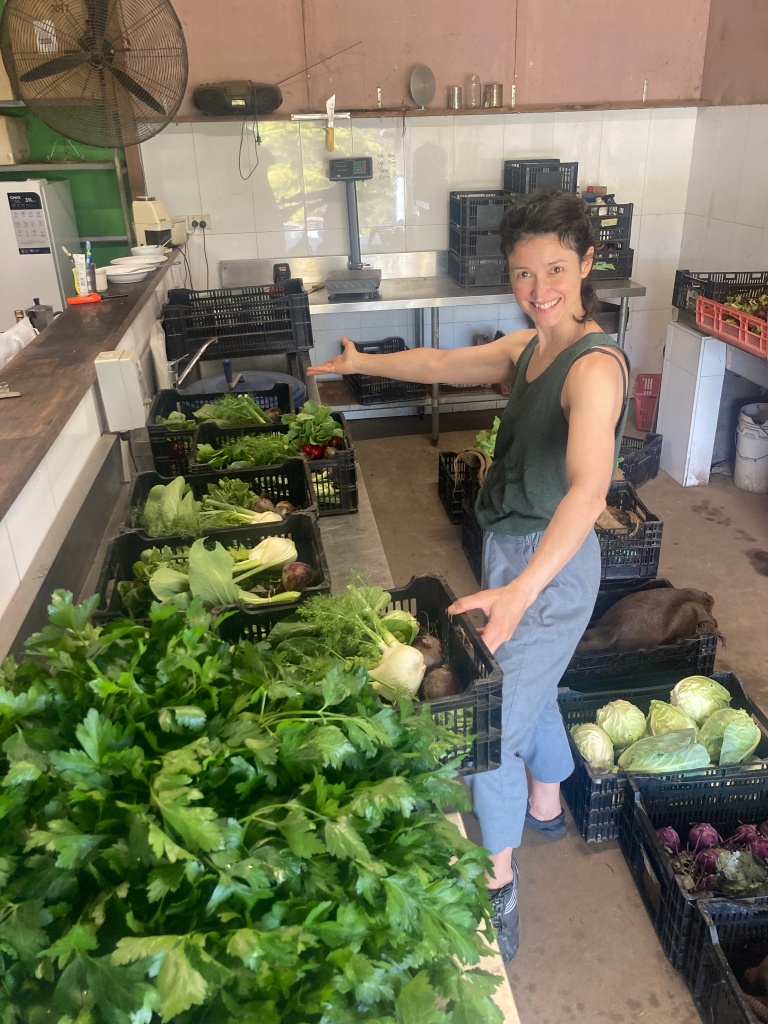
Nämä ihmiset hankkiutuvat ruuan alkulähteille ja hankkivat ruokansa suoraan viljelijöiltä, metsästäjiltä ja kalastajilta sekä muilta paikallistuottajilta. Tutkin väitöskirjassani ruokapiiritoimintaa, joka sai alkunsa Suomessa n. 90-luvulla ja laajeni eräänlaiseksi lähiruokaliikkeeksi 2010-luvulla. Näihin aikoihin Suomeen rantautui muualta maailmalta tuttu, kumppanuusmaataloudeksi ristitty maatalouden malli, joka englanniksi tunnetaan nimellä Community Supported Agriculture (CSA).
Kumppanuusmaatalous sai tiettävästi alkunsa Japanista, missä kaupungeissa asuvat kotiäidit olivat huolissaan lapsillensa syöttämänsä ruuan laadusta ja halusivat hankkia heille puhdasta ja terveellistä ruokaa. He alkoivat ostaa osan ruuasta suoraan viljelijöiltä ja muodostivat heidän kanssaan pitempiaikaisia vaihdantasuhteita. Japaniksi kumppanuusmaataloutta kutsutaan termillä Teikei, jolla usein tässä yhteydessä viitataan “ruokaan, jolla on viljelijän kasvot”.
Japanista kumppanuusmaatalous levisi keski-Eurooppaan ja sieltä Yhdysvaltoihin. Suomeen perustettiin ensimmäinen kumppanuustila vuonna 2011, Kaupunkilaisten Oma Pelto, jonka perustajajäseninä olimme n. 70 muun kotitalouden jäsenen kanssa. Nykyään kumppanuusmaatiloja on ympäri läntisen maailman satoja tuhansia; Suomessa (vain) reilu kymmenen*.
Kumppanuusmaatalous on ottanut eri muotoja sekä Australiassa että Suomessa. Pääideana on kuitenkin se, että kotitaloudet ostavat sato-osuuksia yleensä etukäteen ja sitoutuvat hankkimaan osan ruuastaan tietyn ajanjakson ajan kumppanuustilan kautta. Kumppanuusmaatila voi olla yhden pääviljelijän tai viljelijäporukan omistama ja pyörittämä, tai pellot voivat olla myös vuokralla ja viljelijä voi toimia palkkaperustaisesti osana kumppanuusyhteisöä. Sato-osuuksien sisältö vaihtelee satokausien mukaisesti kuten myös toimitustiheys. Joissain kumppanuusmalleissa kotitaloudet osallistuvat peltotöihin ja vapaaehtoistyö on oleellinen osa toimintaa kun taas toisissa malleissa ei vapaaehtoistyön odotusta ole lainkaan. Osassa sato korjataan kokonaan tai osittain itse, ja osassa valmis satokassi toimitetaan jakopisteeseen tai ovelle. Myös maksujärjestelyt ja hinnat poikkeavat toisistaan.

Täällä Australiassa olen vieraillut yhdellätoista ja työskennellyt kuudella maatilalla, joista neljä on ollut kumppaanuusmaatiloja. Kolmella tilalla neljästä osuudet sisältävät kasviksia, ja yhdellä tilalla on myös lihaosuuksia. Käytännössä tilat toimivat niin, että he myyvät suurimman osan sadostaan sato-osuuksien muodossa: ihmiset saavat kerran viikossa satokassiinsa kokoelman niitä kasviksia, joita maa kulloinkin tuottaa. Maksutavat eroavat Suomessa tuntemistani kumppanuustiloista niin, että täällä ihmiset maksavat yleensä lyhyemmistä osuuksista kuin koko vuodesta; joskus jopa vain kassin kerrallaan. Toisaalta täällä on myös täysin eri sesongit, sillä satoa saa korjattua melkolailla ympäri vuoden.

Se, mikä yllätti minut täkäläisillä kumppanuustiloilla on se, että yksi mallin perustavanlaatuisista ajatuksista, eli se että ostaessaan sato-osuuden kotitaloiudet sitoutuvat jakamaan viljelyyn liittyviä riskejä, ei näytä toteutuvan; vaikka sato-osuuteen tulevat kasvikset vaihtelevatkin, niin määrällisesti osuudet ovat aina olleet todella runsaat. Eli vaikka jokin lajike ei olisikaan tuottanut odotettua satomäärää, niin viljelijät kompensoivat sitä muilla kasviksilla. Suomessa taas kokemukseni mukaan saattaa silloin tällöin käydä niin että jokin tai jotkin lajit kerta kaikkiaan epäonnistuvat ja tällöin satokassit ovat niukempia.
Siksi suora käännös CSA-mallille, yhteisön tukema maatalous, kuvaa mielestäni osuvammin toimintamallin perusideaa kuin kumppanuusmaatalous: kotitaloudet tukevat monimuotoisten pienviljelijöiden ja viljelijäyhteisöjen tekemää työtä hankkimalla ruokansa suoraan tiloilta, sitoutuen pitkäaikaisiin vaihdantasuhteisiin ja pyrkien jakamaan viljelyyn liittyviä riskejä. Havaintojeni mukaan riskien jakaminen ei kuitenkaan toteudu suurimalla osalla maatiloista, vaikka juuri tämä toiminto on se, mikä erottaa mallin markkinaehtoisesta ruuan vaihdannasta.
Tästä syystä hahmotan itse kumppanuusmaatalouden ennen kaikkea eräänlaiseksi sopimusviljelyn malliksi: viljelijät ja kotitaloudet sopivat keskenään miten he haluavat oman kumppanuusmallinsa järjestää. Kuten Australian food Sovereignty Alliance toteaa, olennaista on, ettei kumppanuudessa ole välikäsiä, vaan viljelijät ja kotitaloudet ovat suorissa vaihdantasuhteissa keskenään.

Vaikka riskien jakaminen ei toteudukaan suurimassa osassa kumppanuuksista, niin havaintoni mukaan — ja toisin kuin markkinatalouteen pohjaavassa vähittäiskaupassa — yhteisö on keskeinen kumppanuusmaataloudessa. (En laske etukorttien omistamista yhteisöllisyyden esikuvana). Yhteisö, joka eniten kannattalee kumppanuuksia ei kuitenkaan ole (valitettavasti) kotitaloudet, vaan viljelijää tukeva yhteisö. Kirjoitin asiasta aiemmin viljelijän toimeentuloa käsittelevässä blogissani, eikä tarkoitukseni ole tässä toistaa samoja asioita, mutta haluan erityisesti mainita, että ilman tätä yhteisöä yhtään kumppanuusmaataloutta ei olisi alunalkaenkaan olemassa. Kaikki ne ihmiset, jotka auttavat maatilojen ja markkinapuutarhojen töissä toimien vapaaehtoisina, osa-aikaisina, tai palkoillisina, ystävät ja perheenjäsenet, jotka auttavat sekä työpanoksellaan, rahallisesti että muilla tavoin, tai maanomistajat, jotka haluavat tukea monimuotoista ja maaperästä sekä eläimistä huolehtivaa viljelyä, ovat osa yhteisöä, joka kumppanuusmaatalouksia kannattelee.
***
Viettäessämme taannoin smokoa, eli n. klo 10.30 tapahtuvaa kahvitaukoa, kuten täällä Australiassa on tapana sanoa, kirjoitin muistiinpanovihkooni seuraavan lauseen:
“Se, millä on loppujen lopuksi merkitystä ovat ihmisten väliset suhteet sekä suhteemme muuhun elolliseen ympäristöön; nämä suhteet, jotka tekevät meistä niitä, keitä olemme, keneksi tulemme ja miten toimimme eilen, tänään ja huomenna.”
Ilman yhteisöjä me emme ole, ja ilman meitä ei ole yhteisöjä.
*Olen kirjoittanut blogissani aiemmin erilaisista kumppanuusmalleista, toiminut aiheesta tehdyn gradun toisena ohjaajana ja puhunut sekä opettanut aiheesta jo vuosia; kumppanuusmaataloudesta löytyy myös paljon kansainvälistä kirjallisuutta. Suomalaisia kumppanuustiloja voi etsiä mm. näiltä Ruralia-instituutin sivuilta.
Australia, chapter 9: Community Supported Agriculture
[for the references, please see the Finnish version]
The life on Earth has organized around food provisioning. Different organisms and animal communities have had to both compete and cooperate for their food for billions of years to survive. Similarly, humans around the world have survived for tens of thousands of years by hunting, fishing, gathering, and cultivating food in communities.
Comparatively recently, only about two centuries in industrialized Western countries, this trend has shifted. With urbanization and the development of modern societies, food provisioning has radically changed. Just a century ago, the majority’s main occupation was agriculture, and a large part of the population lived in local food self-sufficiency. In the early 1990s, Finland had over 100,000 farms. Nowadays, self-sufficiency in food is mostly a distant dream of some people, with official statistics indicating fewer than 50,000 farms. Food is now acquired from supermarkets and fast-food chains, wrapped in plastic packages.
While artisanal bread and wild herbs have become trends, our connection to the origin of food has almost disappeared. As households’ relationship with the origin of food has distanced, the operational environment for farmers has narrowed. Most farmers cannot genuinely influence their farming livelihoods; instead, and particularly in Finland, farming livelihoods are determined by agricultural subsidies oriented towards economic growth, export, and market competition. Equally the powerful market actors such as the agricultural input industry and oligopolistic retailers have impacted greatly on the ways farming nowadays happens.
I understand that the life of farmers has never been easy, and my intention is not to romanticize the past. However, statistical and qualitative data suggest that Finnish farmers felt their position significantly deteriorating with the indtorudtion of the European Union’s common market and EU policies.
Gabriel Garcia Marquez’s “One Hundred Years of Solitude” turned into a hundred hectares of solitude.
Today, factors other than locally adapted and nutritionally rich food production guide food provisioning. Global food markets based on colonization and, increasingly, financial markets dictate what we eat and how our food is produced. Both agricultural input and machinery industries and the food processing and retail industries are becoming more concentrated, with power in the hands of a few companies.
Even though Finland and Australia have very little in common regarding agricultural development, weather conditions, or soil, there is one resemblance. What I noticed during my stay here is that Australian food markets are nearly as concentrated as Finnish food markets. In Finland, two major players, S-Group and K-Group, control a combined 82% of the daily consumer goods market, while in Australia, the market share of the two largest grocery store chains, Woolworths and Coles, is 65%.
In practice, this means that the majority of people in both countries obtain their food by buying it from the store without knowing what the production of that food has required from humans and other species or how production has affected the local environment and communities. Most people buy their food without knowing the individuals who have plowed and sown the fields, fed and slaughtered the animals, incurred debt and burnt themselves out, cared for and loved those whose hands have touched our food.
Most people in both countries do not care and do not even consider that it might matter where their food comes from, who produced it, and how. And even for those who care it may be extremely difficult to actually source food from its original sources.
Having worked in the field of local food procurement and production for the past ten years, I have been lucky to work with people who actively seek out the origins of their food and source it directly from farmers, hunter-gatherers, and fishermen (and fisherwomen), as well as other local producers. In my dissertation, I studied the phenomenon of food collectives, which originated in Finland around the 1990s and expanded into a kind of local food movement in the 2010s. Around this time, also a farming model known as Community Supported Agriculture (CSA) was introduced in Finland, originating from elsewhere in the world.
Community Supported Agriculture reportedly originated in Japan, where urban housewives were concerned about the quality of food they fed their children and wanted to obtain pure and healthy food. They began buying part of their food directly from farmers and formed long-term exchange relationships with them. In Japanese, community-supported agriculture is called Teikei, often referring to “food with the face of the farmer.”
From Japan, community-supported agriculture spread to Central Europe and then to the United States. The first community-supported farm in Finland was established in 2011, called Kaupunkilaisten Oma Pelto, with around 70 other household members. Nowadays, there are hundreds of thousands of community-supported farms worldwide; in Finland, just over a dozen.
Community-supported agriculture takes various forms in both Australia and Finland. However, the main idea is that households buy shares of the harvest usually in advance and commit to obtaining part of their food through the community-supported farm for a certain period. A community-supported farm can be owned and operated by one main farmer or a group of farmers, or the fields can be leased, and the farmer may operate on a wage basis as part of the community-supported community. The contents of the shares vary seasonally, as does the delivery frequency.
In some community-supported models, households participate in fieldwork, and voluntary work is an essential part of the activity, while in others, there is no expectation of voluntary work. In some models, the harvest is entirely or partially harvested by members themselves, and in some cases, the finished harvest bag is delivered to a distribution point or door. Payment arrangements and prices also differ.
In Australia, I have visited eleven and worked on six farms, four of which are community-supported farms. Three out of four farms include vegetables in their shares, and one farm also has meat shares. In practice, farms operate by selling most of their produce in the form of shares: people receive a collection of the vegetables the land produces once a week in their harvest bag. Payment methods differ from CSA farms I am familiar with in Finland, as people in Australia usually pay for shorter shares rather than for the whole year, sometimes even just for a bag at a time. On the other hand, there are entirely different seasons in Australia, as veggies can be harvested (almost) all year round.
What surprised me about the community-supported farms here in Australia is that one of the fundamental ideas of the model, which is that by buying a share, households commit to sharing the risks of farming, does not seem to materialize. Although the selection of vegetables in each share (veggie box) may vary, quantitatively the boxes have always been plentiful. Even if a particular variety did not produce the expected yield, I’ve observed the farmers compensate for it with other vegetables. In Finland, on the other hand, in my experience, there may occasionally be cases where certain varieties simply fail, and in these situations, harvest bags are scarce.
Thinking of a CSA model in terms of agriculture supported by community seems to describe the original idea(l) of the model even more accurately than what the abbreviation, community supported agriculture, stands for. In its ideal form CSA is about supporting the work of diverse small-scale farmers and farming communities by obtaining their food directly from farms, committing to long-term exchange relationships and sharing the risks involved in farming. However, in most cases, risk-sharing does not, in reality, occur in community-supported agriculture, although this function is what distinguishes the model most from market-based food exchange.
For this reason, I perceive community-supported agriculture primarily as a form of contract farming: farmers and households negotiate how they want to organize their own community-supported model. As the Australian Food Sovereignty Alliance states, the essential point is that there are no intermediaries and middlemen in the partnership; farmers and households are in direct exchange relationships with each other.
Even though risk-sharing doesn’t materialize in the majority of partnerships, in my observation — and unlike transaction based exchanges in a market economy — community is central in community-supported agriculture. (I don’t consider owning loyalty cards as an example of community.) However, the community that most strongly supports partnerships is not (unfortunately) households, but the community formed around the proximity of the farm; those people who directly support farmers in their everyday work and lives.
I wrote about this in a previous blog post about farmers’ livelihoods, and my intention here is not to repeat the same points. Still, I want to emphasize that without this proximate community, there would be no community-supported agriculture in the first place. All those people who help on farms and market gardens as volunteers, part-timers, or employees, friends and family members who contribute with their time, income, investements and other means, or landowners who want to support diverse and sustainable farming practice, are part of the community that in essence sustains community-supported agriculture.
During a smoko (smoko refers to a coffee break around 10:30, a term typically used by Australian farmers) that I attended recently at the Harvest Farms I wrote the following sentence in my notebook:
“In the end, what matters are the relationships between people and our connection to the broader living multispecies world; these relationships shape who we are, who we become, and what we end up doing — yesterday, today, and tomorrow.”
Without communities, we are nothing, and without us, there are no communities.

